Posterior Cervical Fusion Surgery

What is a posterior cervical procedure?
The primary goal of a posterior cervical procedure is to relieve pressure on the nerve roots or spinal cord in the cervical spine using a surgical approach through the back of the body.
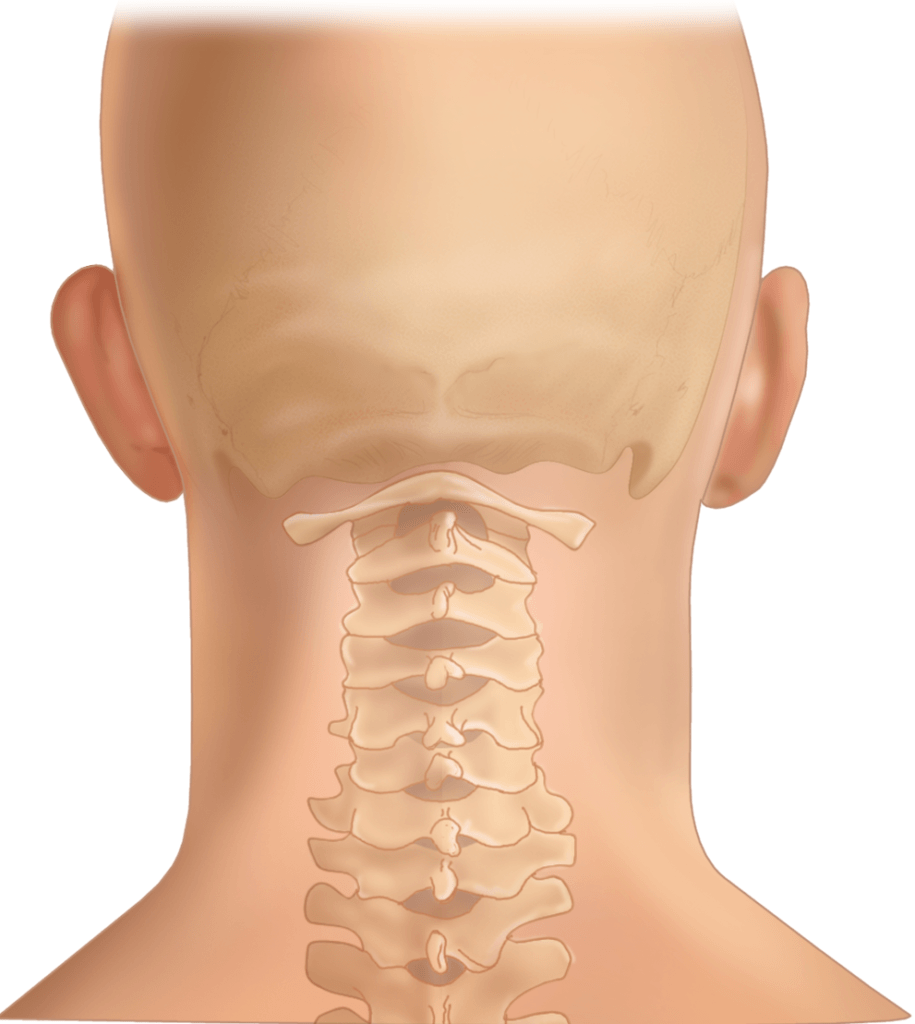
Posterior cervical spine
How is a posterior cervical procedure performed?
During surgery, the patient lies face down. The surgeon makes an incision in the skin on the back of the neck over the vertebra(e) to be treated.
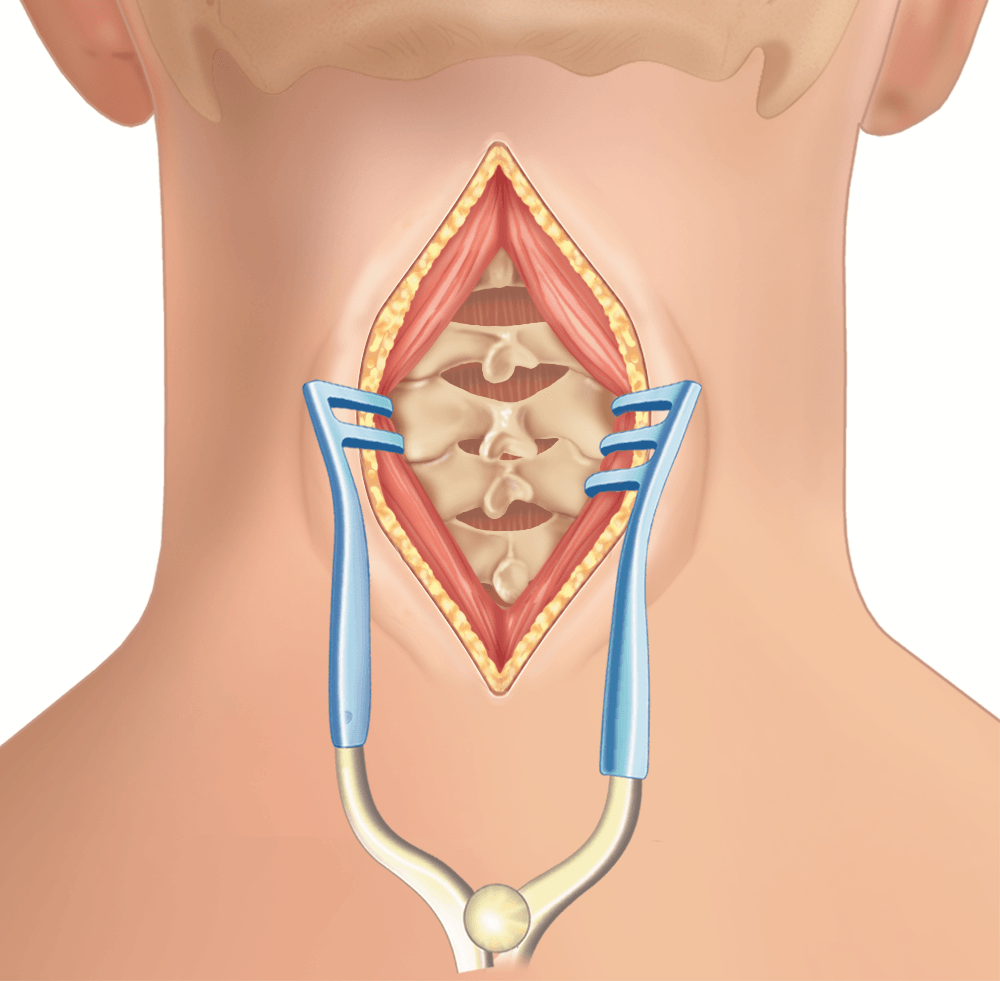
Accessing the posterior cervical spine
Depending on the site of compression, removal of the lamina as well as removal of bone spurs may be performed where the nerve roots exit the spinal canal.
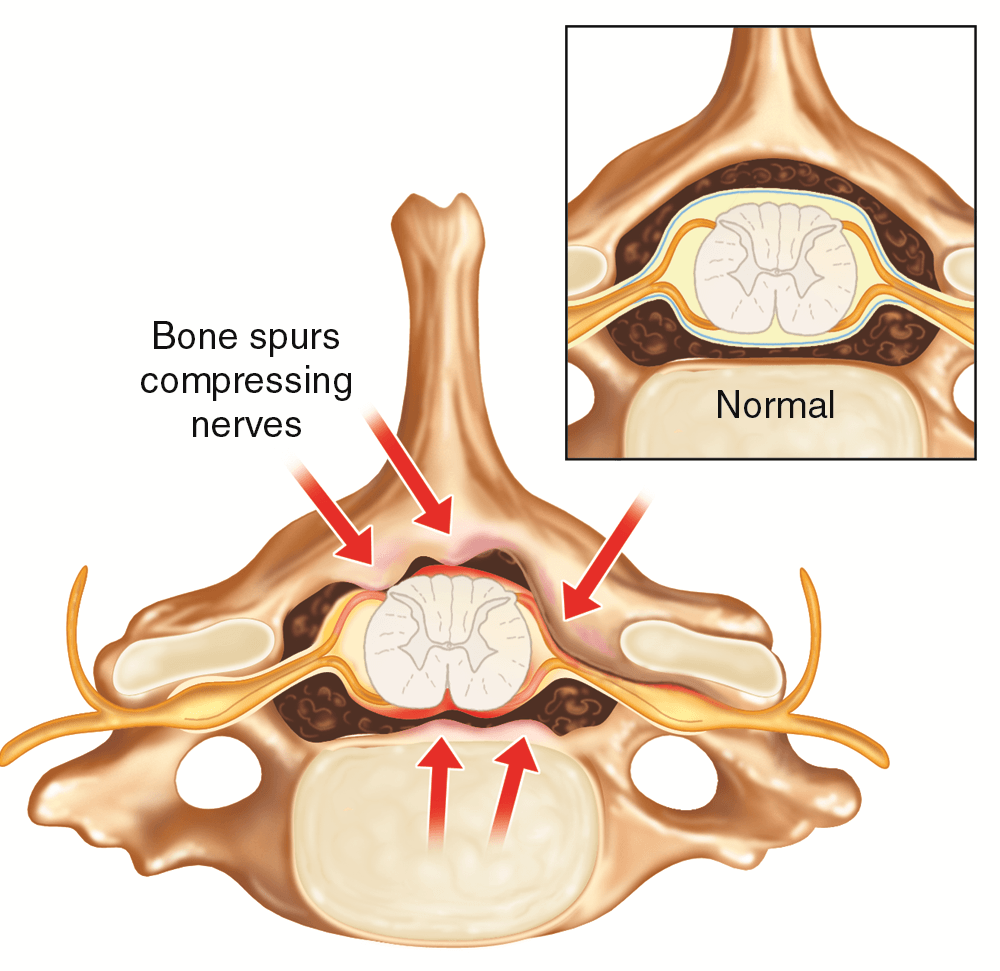
There are different types of fixation that may be placed in the neck to help promote posterior cervical fusion.
Screw and Rod Fixation
Screws or hooks and rods are used to hold the spinal column in place while fusion occurs or to provide stability. The screws are inserted into the left and right sides of the vertebrae to be fused. A rod connects the screws to stabilize the spine on each side. Caps secure each screw to the rod.
Bone graft may be added along the side of the vertebrae to help with fusion. Once the surgery is complete, the surgeon closes the incision and moves the patient into recovery.
Over time, the vertebrae can grow together through fusion. Complete fusion varies among patients and can take a few months to a couple of years.
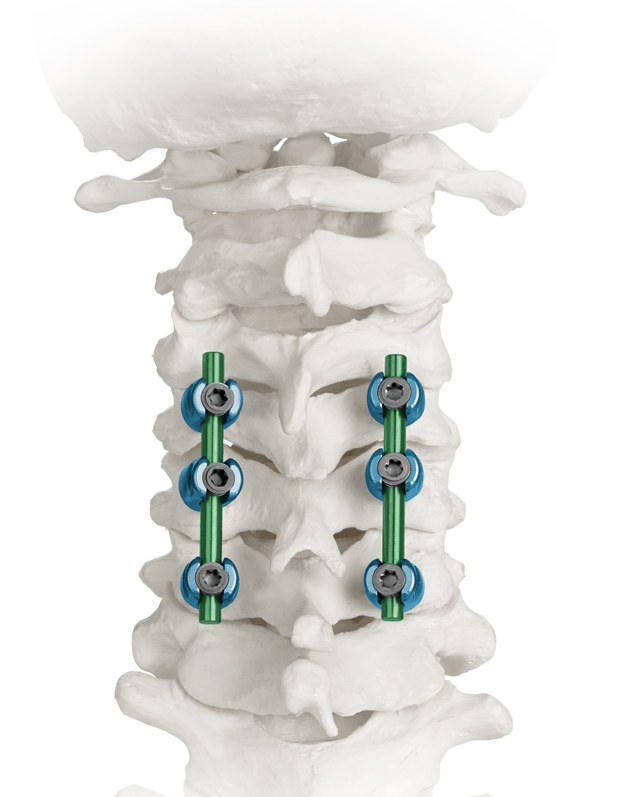
Laminoplasty Plate
Laminoplasty is a surgical procedure in which the lamina is repositioned to relieve the symptoms caused by spinal cord compression. The lamina is a bony structure at the rear of the vertebra. Each vertebra includes two laminae that form the roof over the spinal canal to protect the back of the spinal cord.
Decompression is achieved by opening and elevating the lamina to alleviate pressure on the spinal cord. The surgeon lifts one side of the lamina to widen the spinal canal and relieve pressure.
To hold the lamina open, the surgeon may insert an implant such as a laminoplasty plate.
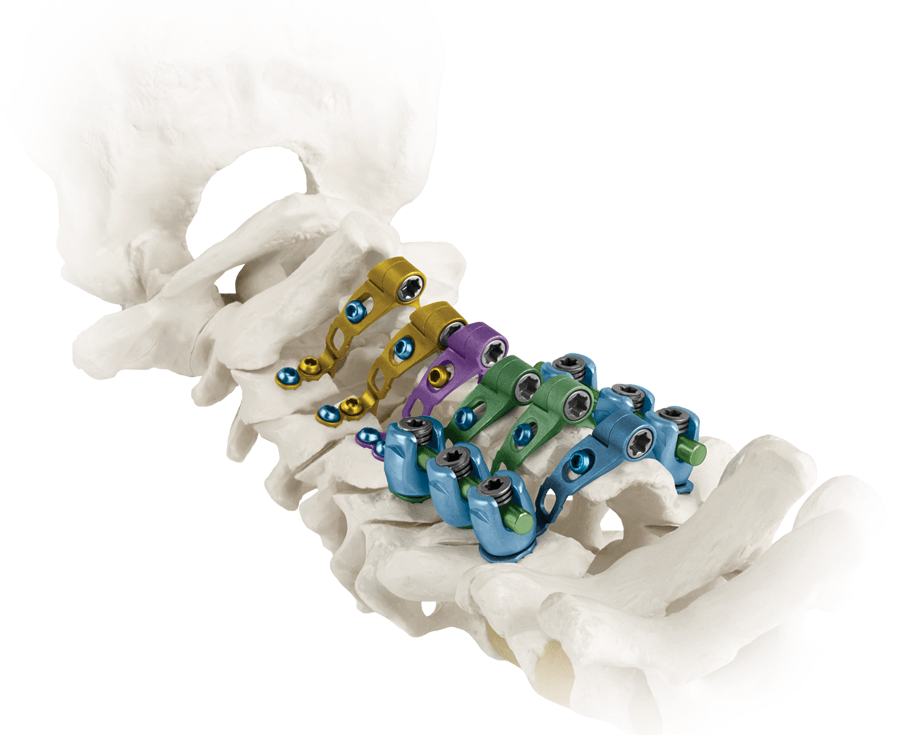
Frequently Asked Questions about Posterior Cervical Fusion Surgery
What Can I Expect from Surgery?
Posterior cervical surgery may help you return to normal activities. Between two to four weeks after surgery, patients may notice improvement of some or all symptoms and reduced postoperative pain. Recovery time varies between patients. It is the surgeon’s goal for the patient to eventually return to his/her preoperative activities. A positive attitude, reasonable expectations, and compliance with your doctor’s post-surgical instructions may all contribute to a satisfactory outcome.
When Will I Be Able to Return to Work?
The amount of recovery time needed prior to returning to work varies depending on the surgery, your job, and you as an individual. Please consult your surgeon for an individual recommendation.
How Long Will I Have Restricted Activities?
As with any surgery, return to normal activities is different for every patient. Your surgeon may provide a list of activities you should avoid during the first six weeks after surgery.
Disclaimer:
The material on this website is intended to be an educational resource only and is not meant to be a warranty or to replace a conversation between a patient and their physician or member of their health care team. Please consult a physician for a complete list of indications, contraindications, precautions, warnings, clinical results and other important medical information that pertains to this procedure. The decision to receive medical treatment is individualized to the patient and the patient’s symptoms. The information presented on this site may not apply to your condition, treatment or its outcome, as surgical techniques vary and complications can occur. It is important to discuss the viability of any surgical procedure with a physician to decide the right treatment option.
